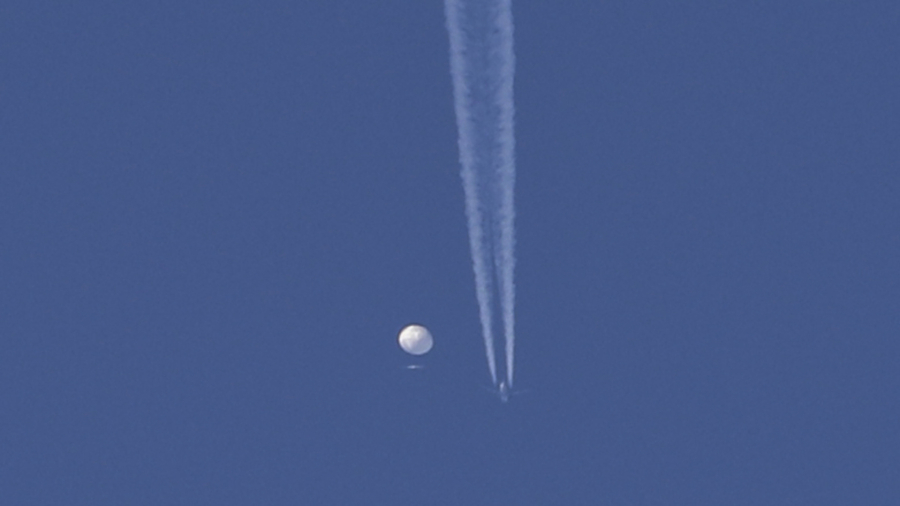The Chinese spy balloon that flew over the United States for days before being shot down could monitor communications signals, a U.S. official says.
“High resolution imagery from U-2 flybys revealed that the high-altitude balloon was capable of conducting signals intelligence collection operations,” an official with the State Department, speaking on condition of anonymity, told The Epoch Times.
“The high altitude balloon’s equipment was clearly for intelligence surveillance and inconsistent with the equipment onboard weather balloons. It had multiple antennas to include an array likely capable of collecting and geo-locating communications. It was equipped with solar panels large enough to produce the requisite power to operate multiple active intelligence collection sensors,” the official added.
Frank Gaffney, executive chairman at the Center for Security Policy, told NTD that China would likely have an interest in monitoring communications between intercontinental ballistic missile silos.
Officials said the balloon entered U.S. airspace over Alaska on Jan. 28. It flew over Canada before re-entering the United States on Jan. 31. President Joe Biden ordered the balloon taken down and it was shot from the sky on Feb. 4. The North American Aerospace Defense Command was tracking the balloon the entire time.
“The United States sent a clear message to the PRC that its violation of our sovereignty was unacceptable by shooting down the balloon, protecting our own sensitive intelligence, and maximizing our ability to track the balloon and recover the payload to get more information on the PRC’s program,” the State Department official said, adding that the United States would explore taking action against Chinese entities that supported the incursion of U.S. airspace. PRC stands for People’s Republic of China.
The balloon is believed to be part of communist China’s fleet of balloons developed to conduct surveillance operations, which are typically undertaken at the direction of the People’s Liberation Army. The program has been in operation “for several years,” a Pentagon spokesman said Wednesday. U.S. officials have since learned that China has flown the surveillance balloons over more than 40 countries across 5 continents, the State Department official said.

The United States is contacting other countries to learn about the scope of the program and other details.
Mao Ning, with China’s Foreign Ministry, told reporters in Beijing that the accusations “may be part of the U.S. side’s information warfare against China” and claimed that the United States was “overreacting” when it shot the balloon down.
Some U.S. lawmakers have been critical of the decision to wait to bring the craft down until it had flown across multiple states.
An assessment of the risk of intelligence collection was deemed to be low to moderate while the risk to U.S. personnel on the ground if the balloon was shot down was determined to be moderate to significant, prompting officials to advise Biden to wait to bring down the balloon until it was over water, Lt. Gen. Douglas Sims, director of operations for the Joint Chiefs of Staff, said during a hearing on Capitol Hill on Thursday.
Melissa Dalton, assistant secretary of defense for homeland defense and hemispheric affairs, assured members of Congress that the United States was able to “protect against PRC intelligence collection,” saying it was “straightforward because we knew where the balloon was.”
The balloon entering the United States “is part of the broader suite of operations that China is undertaking to try and get better understanding of U.S.,” Jedidiah Royal, principal deputy assistant secretary of defense for Indo-Pacific security affairs, told members before being interrupted by Sen. Jon Tester (D-Mont.), who asked whether U.S. officials know what intelligence the Chinese were trying to collect.
“We have some very good guesses about that, and we are learning more as we exploit the contents of the balloon and the payload itself,” Royal said.
Ivan Pentchoukov contributed to this report.
From The Epoch Times

